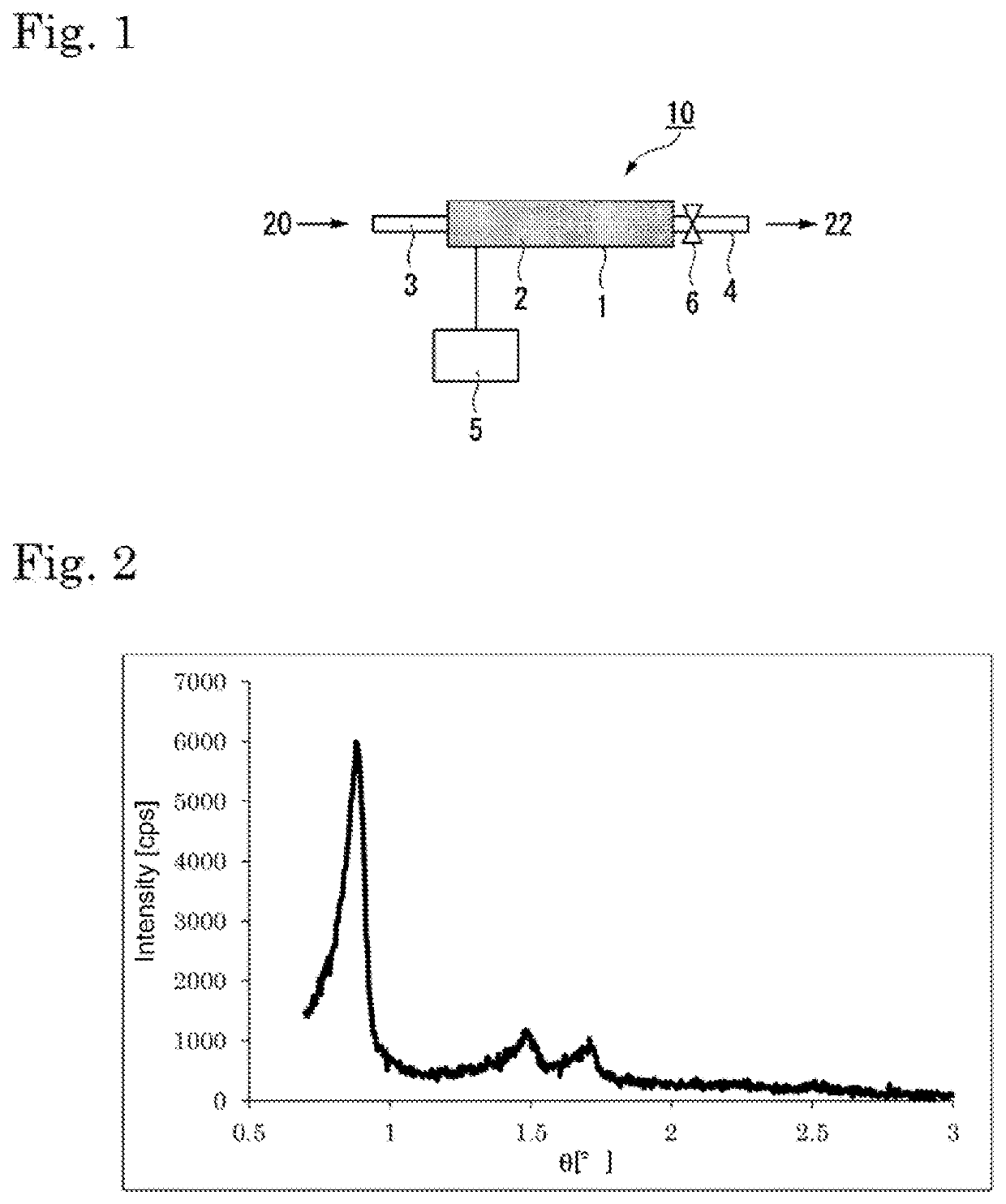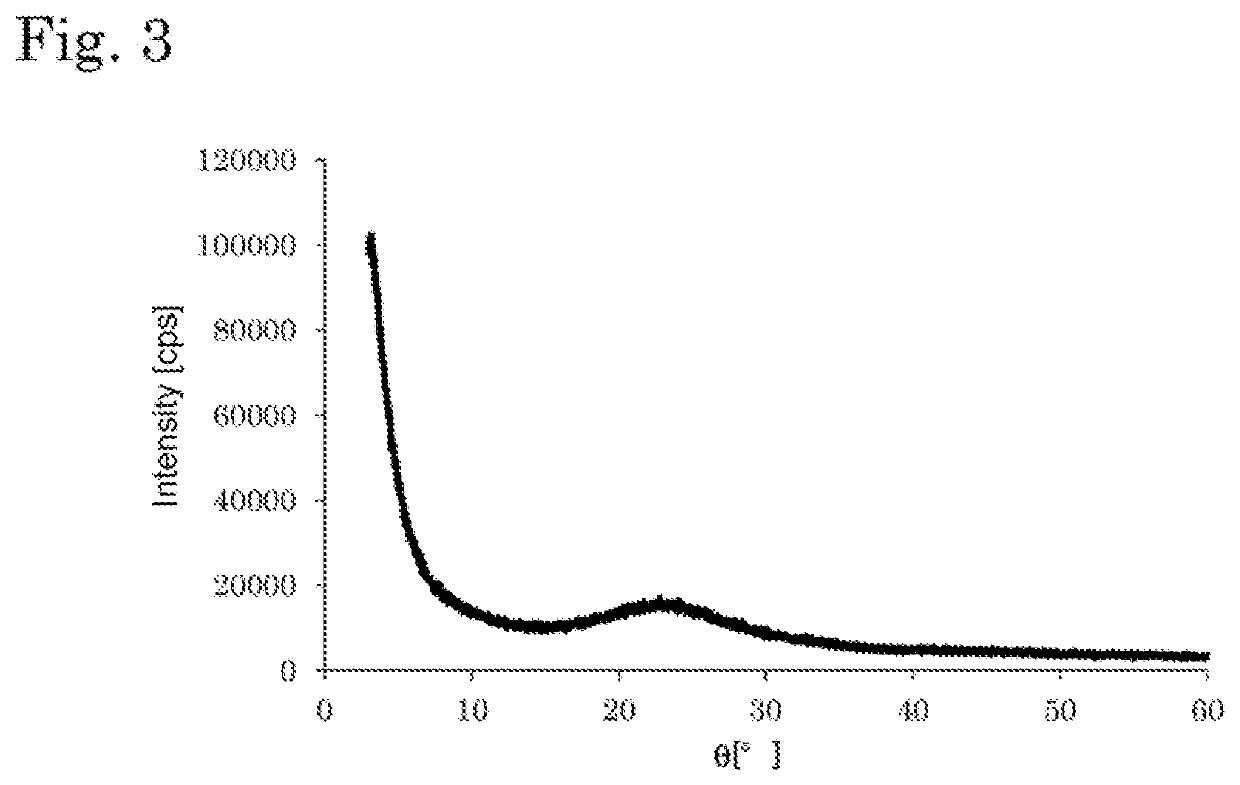Catalyst and method for producing diene compound
a catalyst and compound technology, applied in the direction of silicon compounds, physical/chemical process catalysts, organic reduction, etc., can solve the problems of increasing and the amount of butadiene obtained by naphtha cracking of petroleum, so as to suppress the activity and reduce the amount of oil used. , the effect of high yield
- Summary
- Abstract
- Description
- Claims
- Application Information
AI Technical Summary
Benefits of technology
Problems solved by technology
Method used
Image
Examples
example 1-1
[0302]A beaker was charged with 2 g of P123 ([(HO(CH2CH2O)20(CH2CH(CH3)O)70(CH2CH2O)20)H], manufactured by BASF) as a surfactant, then 65 mL of water and 35 mL of 2 N hydrochloric acid were added, and the mixture was stirred at a speed of 100 rpm under ordinary temperature and pressure conditions to dissolve the surfactant. While stirring the aqueous solution in which the surfactant was dissolved at a rate of 100 rpm under ordinary temperature and pressure conditions, a total of 64 mg of hafnium chloride (HfCl4) was added at a rate of 10 mg / min. After visually confirming that all of the hafnium chloride had dissolved, the mixture was stirred at a rate of 100 rpm under ordinary temperature and pressure conditions, and 4.2 g of tetraethoxysilane was added at a rate of addition of 0.1 g / min to prepare a raw material solution. The concentration of hafnium chloride in the raw material solution was 0.64 g / L, the tetraethoxysilane concentration was 4.8 g / L, and the hydrochloric acid concen...
example 1-2
[0307]Catalyst production, X-ray diffraction line measurement, and catalyst evaluation were carried out in the same manner as in Example 1-1, except that the amount of hafnium chloride (HfCl4) used in Example 1-1 was changed to 71 mg. The results are shown in Table 1.
example 1-3
[0308]Catalyst production, X-ray diffraction line measurement, and catalyst evaluation were carried out in the same manner as in Example 1-1, except that the amount of hafnium chloride (HfCl4) used in Example 1-1 was changed to 80 mg. The results are shown in Table 1.
PUM
| Property | Measurement | Unit |
|---|---|---|
| pore size | aaaaa | aaaaa |
| diffraction angle | aaaaa | aaaaa |
| half width at half maximum | aaaaa | aaaaa |
Abstract
Description
Claims
Application Information
 Login to View More
Login to View More - R&D
- Intellectual Property
- Life Sciences
- Materials
- Tech Scout
- Unparalleled Data Quality
- Higher Quality Content
- 60% Fewer Hallucinations
Browse by: Latest US Patents, China's latest patents, Technical Efficacy Thesaurus, Application Domain, Technology Topic, Popular Technical Reports.
© 2025 PatSnap. All rights reserved.Legal|Privacy policy|Modern Slavery Act Transparency Statement|Sitemap|About US| Contact US: help@patsnap.com


